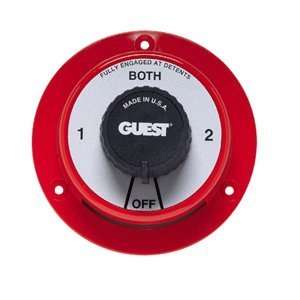Your latest diagram looks nice. Of course, I still have comments! 
The starter fuse/line is a huge upgrade from your original, but will make a solid install. With Main's comments on fuse size and over-rating, you could even make the 175A fuse a 200A or 225A (#2 is rated 160 in engine spaces). That would ensure it never blows. The fact that your 1/2 switch is 5-6 feet from the batteries does mean the run to the starter is fairly long, so the #2 helps with that.
You've added the bilge pump to the diagram. Now you are up to 6 items that are "always hot." Then you show a shunt, which means you are planning on a battery meter (and you already probably have a volt meter), so that is another line. How about this idea:
* Drop the 125A to 60A. Still adequate for the alternator current.
* Keep the Alt line at #4 for voltage drop issues.
* Get a bus bar, termination point, or small FUSE panel (breaker panel would be too $$). Like this one: http://shop.genuinedealz.com/Items/...ATO/ATC 6 Circuit Fuse Block with Clear Cover
* Connect the bilge, charger, and solar to this.
* The wire to the bar/panel would only need to be a #8 -- easy to handle.
* Connect the bus bar to the alternator side of the 120A switch. That way you can shut down all that stuff if you ever needed to work on it, but since the switch is always on, it is always hot.
Adding that bus bar/panel gets you to 2 items on the battery and 2 on the 1/2 switch.
Harry
The starter fuse/line is a huge upgrade from your original, but will make a solid install. With Main's comments on fuse size and over-rating, you could even make the 175A fuse a 200A or 225A (#2 is rated 160 in engine spaces). That would ensure it never blows. The fact that your 1/2 switch is 5-6 feet from the batteries does mean the run to the starter is fairly long, so the #2 helps with that.
You've added the bilge pump to the diagram. Now you are up to 6 items that are "always hot." Then you show a shunt, which means you are planning on a battery meter (and you already probably have a volt meter), so that is another line. How about this idea:
* Drop the 125A to 60A. Still adequate for the alternator current.
* Keep the Alt line at #4 for voltage drop issues.
* Get a bus bar, termination point, or small FUSE panel (breaker panel would be too $$). Like this one: http://shop.genuinedealz.com/Items/...ATO/ATC 6 Circuit Fuse Block with Clear Cover
* Connect the bilge, charger, and solar to this.
* The wire to the bar/panel would only need to be a #8 -- easy to handle.
* Connect the bus bar to the alternator side of the 120A switch. That way you can shut down all that stuff if you ever needed to work on it, but since the switch is always on, it is always hot.
Adding that bus bar/panel gets you to 2 items on the battery and 2 on the 1/2 switch.
Harry





